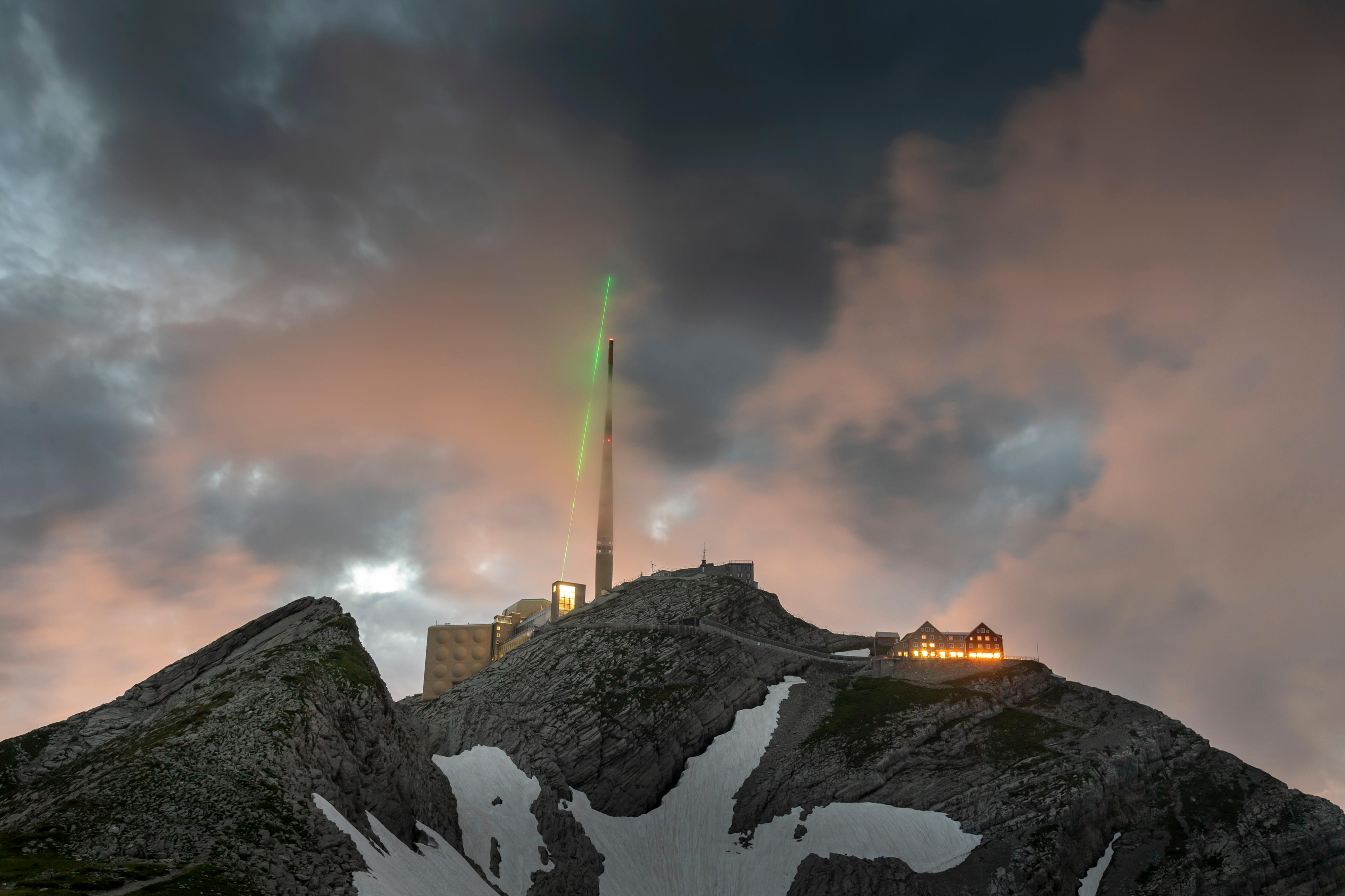News release
From:
Laser in the sky diverts lightning strikes
A powerful laser aimed at the sky can create a virtual lightning rod and divert the path of lightning strikes, a paper published in Nature Photonics demonstrates. The findings may pave the way for better lightning protection methods for critical infrastructure, such as power stations, airports and launchpads.
To date, the most common lightning protection device is the Franklin rod, an electrically conducting metal mast that intercepts lightning discharges and guides them safely to the ground. Acting as a virtual, movable rod, a laser beam directed at the sky could offer an alternative. The idea of using intense laser pulses to guide lightning strikes has been previously explored in laboratory conditions. However, no field result previously exists that experimentally demonstrates lightning guiding by lasers.
Aurélien Houard and colleagues conducted experiments during the summer of 2021 on the Säntis Mountain in northeastern Switzerland to explore whether a laser could guide a lightning strike. A laser the size of a large car, that fires up to a thousand pulses per second, was installed near a telecommunications tower, which is struck by lightning around 100 times a year. Over more than 6 hours of operation during thunderstorm activity, the authors observed that the laser diverted the course of 4 upward lightning discharges. Their observations were corroborated using high-frequency electromagnetic waves generated by the lightning to locate the strikes. Increased detection of X-ray bursts at the time of the strikes also confirmed successful guiding. One of the strikes was directly recorded by high-speed cameras and shown to follow the laser path for over 50 metres.
The authors conclude that their findings extend the current understanding of laser physics in the atmosphere and may aid in the development of novel lightning protection strategies.



 International
International



